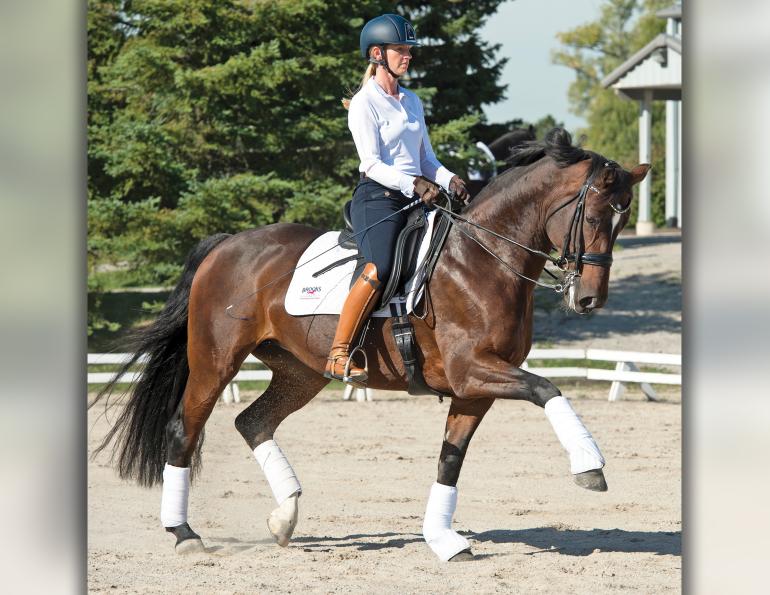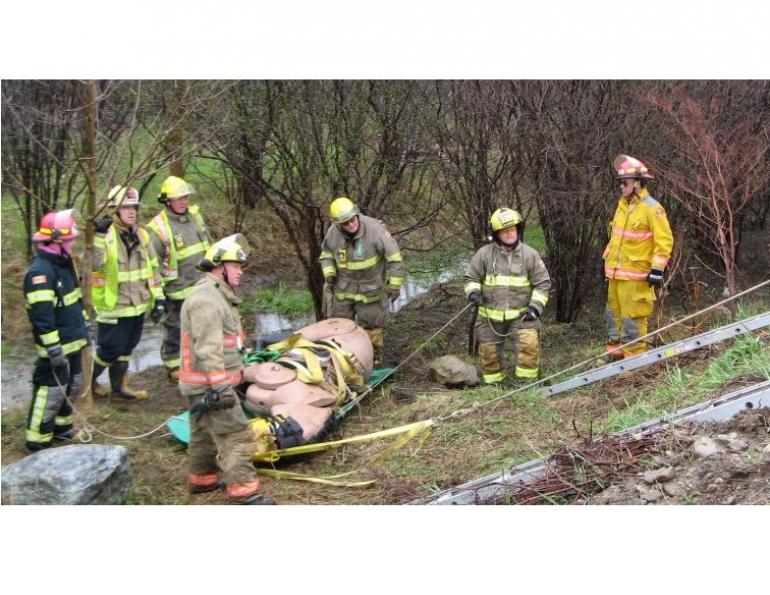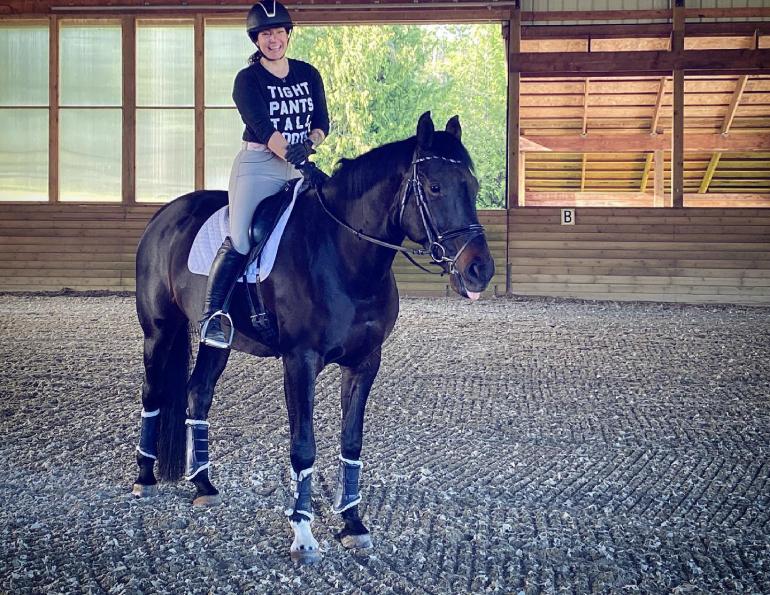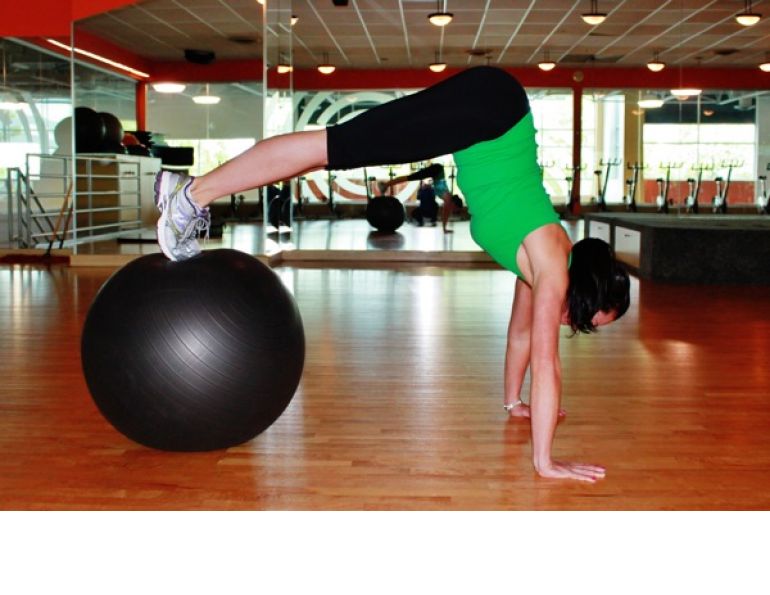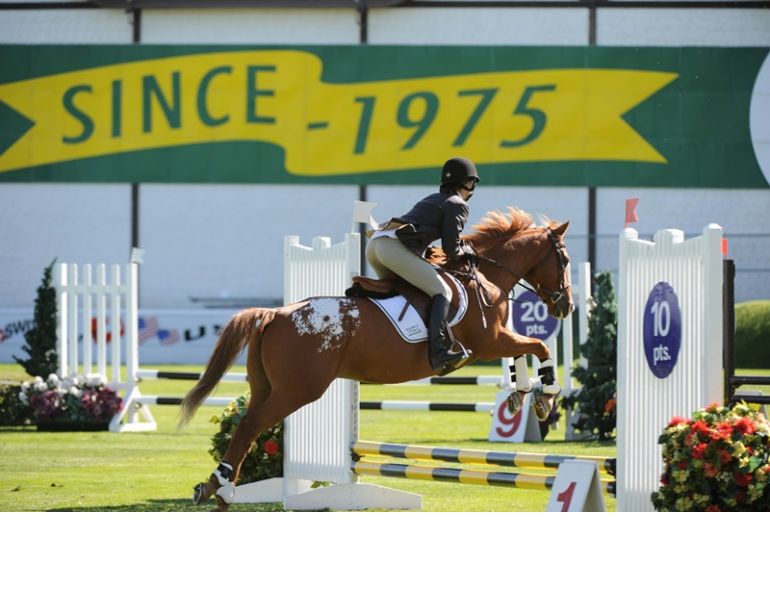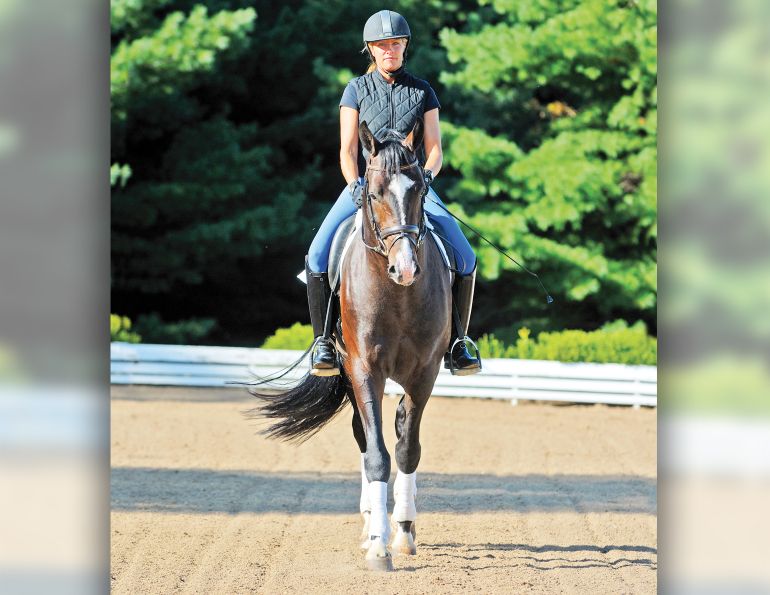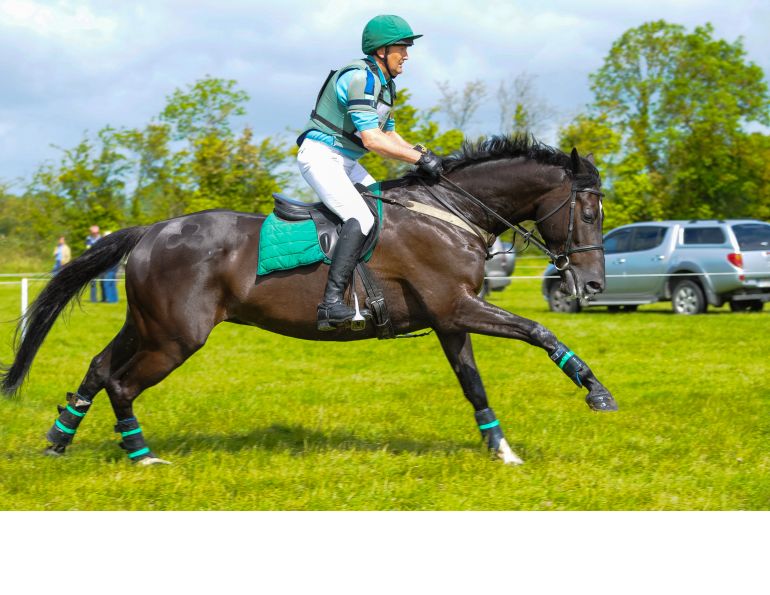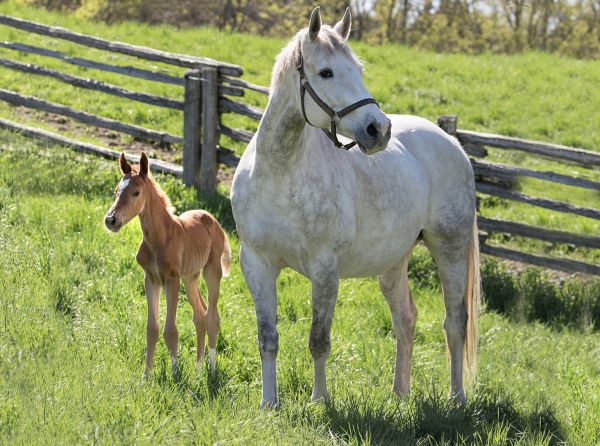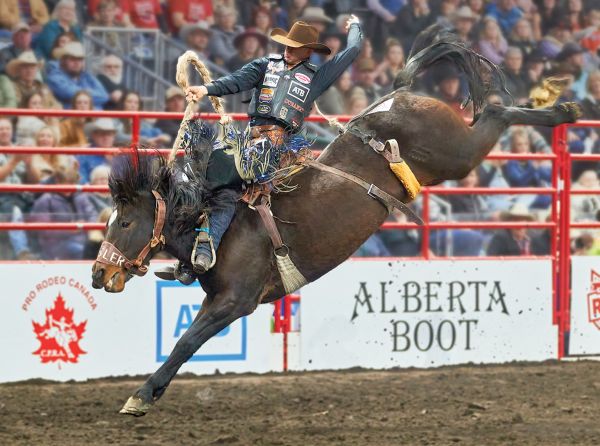Enhancing Performance Through Core Strength and Balance
By Sandra Verda-Zanatta, Level 3 High Performance Coach
Equestrian sports require much more than just mastering the art of riding; they are physically demanding and engage a wide array of muscles throughout the body. Riders depend heavily on their core muscles, including the rectus and transversus abdominus, obliques, and lower back to maintain balance, stability, and posture in the saddle.
Strength, balance, coordination, and flexibility collectively allow riders to clearly communicate and develop harmonious partnerships with their horses.
A strong, stable core can revolutionize equestrian performance. Pilates focuses on targeting core muscles, including the often-overlooked deep stabilizers. Unlike some forms of exercise that primarily engage superficial muscles, Pilates delves deep into the core, homing in on the transversus abdominis, multifidus, and pelvic floor muscles. These deep stabilizers play a pivotal role in maintaining spinal stability, promoting a strong and supportive core structure. Pilates exercises emphasize controlled, deliberate movements that activate these muscles with each repetition, enhancing their endurance and strength. By focusing on these deep stabilizers, Pilates not only cultivates a sculpted and toned core but also fortifies the foundation for better posture, balance, and coordination, essential attributes for equestrians in all disciplines seeking peak performance in the saddle.
Balance is paramount for riders. A strong core acts as the anchor that connects a rider to their horse and is the cornerstone of better balance. Core strength and balance allow riders to maintain postural alignment, distribute weight evenly, and effectively communicate cues through subtle shifts in weight and body position, resulting in more precise and coordinated movements. Beyond the technical aspects, core strength also enhances a rider’s endurance, allowing them to stay in control during long rides or intense competitions, helps to reduce fatigue, stiffness, soreness, and injury, and boosts the confidence of both rider and horse.
Balance allows for improved coordination and serves as the unspoken language between rider and horse. A well-balanced, symmetrical, coordinated rider not only stays securely in the saddle, but also maintains fluidity with the horse’s movements, helping to reduce the strain on the horse’s back. Horses are extremely sensitive to a rider’s stability and centre of gravity, and many of their “evasions” are the result of compensating and reacting to the way the rider sits. In order for the horse to develop his athletic ability and correct musculature, the rider needs to have an independent seat encouraging the horse to relax and lift his back. When the horse’s back is hollow, the hind legs cannot step under and push with balanced power. Rider asymmetry — twisting the torso, leaning to one side, or sitting unequally on seat bones — hinders the horse from developing even muscle tone and can eventually result in soreness and irregularity.
Balance is also key for executing complex maneuvres such as jumps, turns, and intricate dressage routines. In order to improve the horse’s way-of-going, allowing movement with maximum ease and efficiency for best performance, riders need to improve their own stability and be accountable for their own body control.
Whether galloping across open fields or performing dressage movements, balance is the invisible thread that weaves the rider and horse into a unified, elegant partnership, making it an imperative skill for all equestrian disciplines. In essence, a balanced body with a strong core is the equestrian’s secret weapon, fostering not only better riding ability but also a deeper connection and harmony with their equine partner.
Body awareness and retraining can begin with unmounted exercises and is easily transitioned to mounted exercises. In the Fit To Ride Pilates Studio we often work on equipment such as reformers and stability chairs; however, the exercises in this article require minimal equipment and can be done at home, in a hotel or even at the barn! You can take these exercises on the road and start your journey of getting FIT TO RIDE!
Exercise 1: Core Awareness
Starting Position: Stand in riding position with knees slightly bent, hands as though holding reins with elbows bent.

- Have a partner stand in front of you or you can stand in front of a wall or table.
- Press your fists against those of your partner and notice the feeling of your core engaging. This is what you should feel when you ride — the idea of resistance and pushing forward with arms, not pulling backwards. This is an isometric use of muscles – where muscles do not shorten but become firm due to resistance.
- Hold for 10 seconds and repeat 5 times.
- As a progression you can stand on a stability board to challenge your balance.
Exercise 2: Half Rollback with Flex Band
A. Starting position: Sit with legs straight, feet hip-width apart and neutral pelvis, place flex band around feet and hold like reins, keeping elbows bent and hands low.
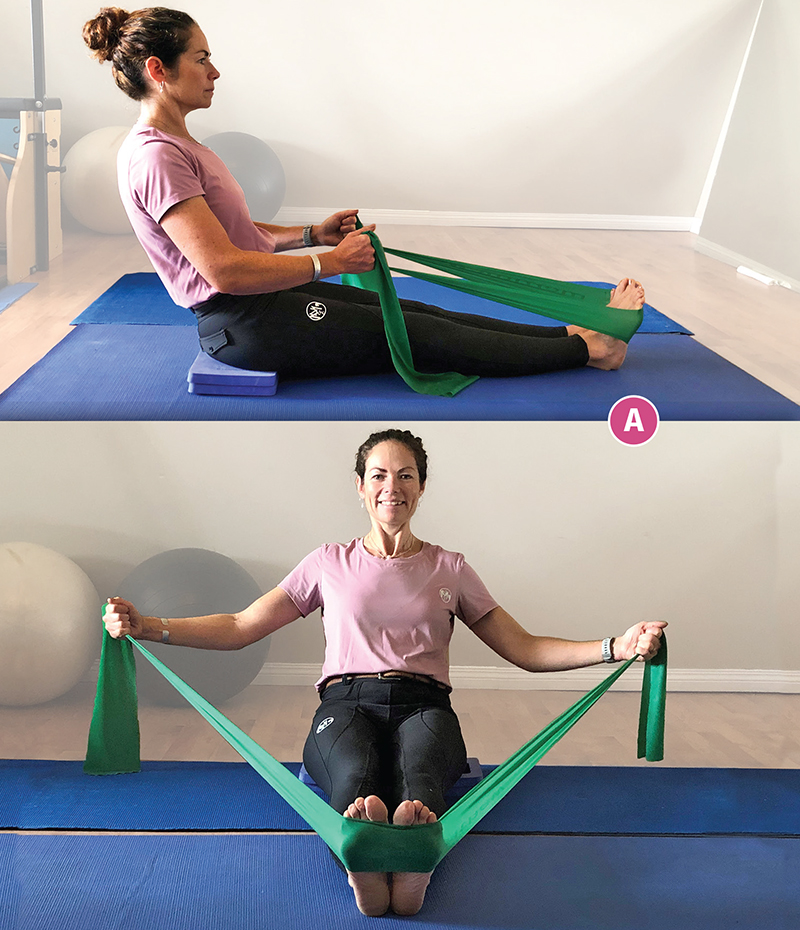
- Inhale, tilt pelvis posteriorly. Think of tucking your tailbone under.
- Exhale, lean upper body back. You will feel your core muscles start to work.
- Inhale, maintain position.
- Exhale to open arms wide, stretching flex band (draw shoulder blades towards spine slightly).
- Inhale close arms. Do this 3 times, continuing to breathe.
- Exhale return to starting position. Repeat 12 times.
Related: Flexibility: Interview with Yoga for Riders Specialist Louise Sattler
Related: 11 Exercises to Improve Your Riding Position
B. Starting position same as above.

- Open arms on diagonal keeping the torso even on both sides using obliques (the distance from your hip bone to bottom rib should be the same on both sides). Repeat 8 times each direction.
Exercise 3: Ab Prep with Flex Band Leg Extensions
A. Starting Position: Lay on your back with knees bent, hip width apart in table-top, place flex band around feet and hold like reins.
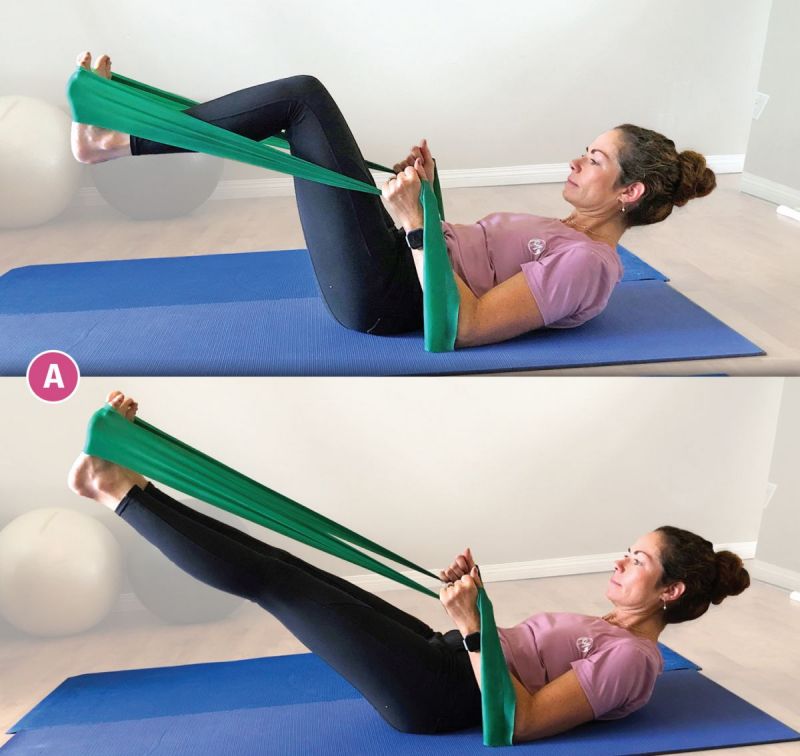
- Exhale, curl upper body up off mat slightly, keeping pelvis neutral.
- Inhale, shoulder blades should be flat on back in neutral, elbows slightly bent, keep your gaze towards your knees.
- Exhale, extend legs out with arms still 3 times.
- Inhale, return to starting position.
- Repeat 8 times.
B. Starting position same as above.
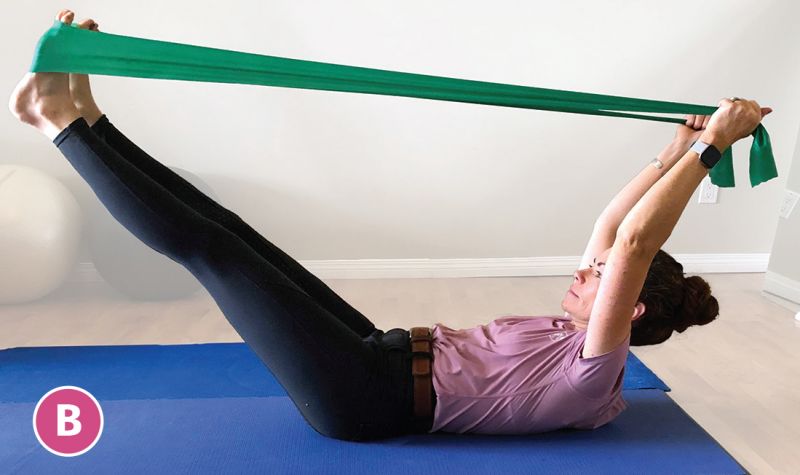
- Arms stretch flex band overhead 3 times.
- Repeat 8 times.
C. Starting position same as above.
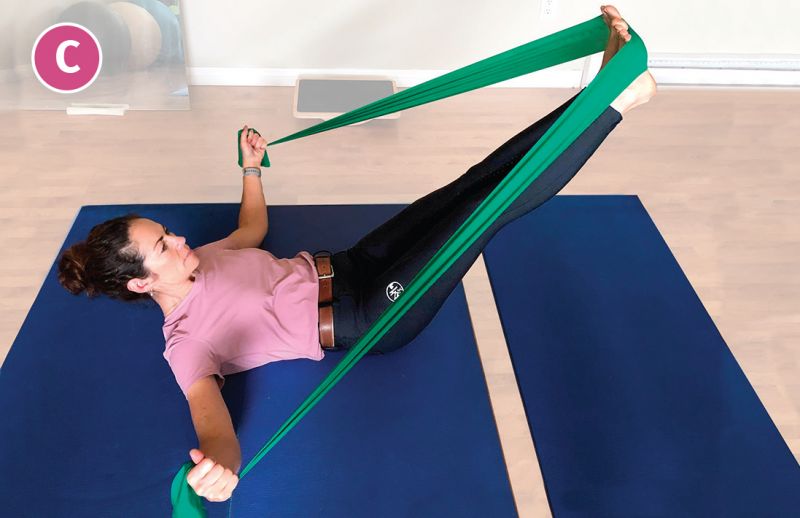
- Arms open wide to side 3 times.
- Repeat 8 times.
D. Starting position same as above.
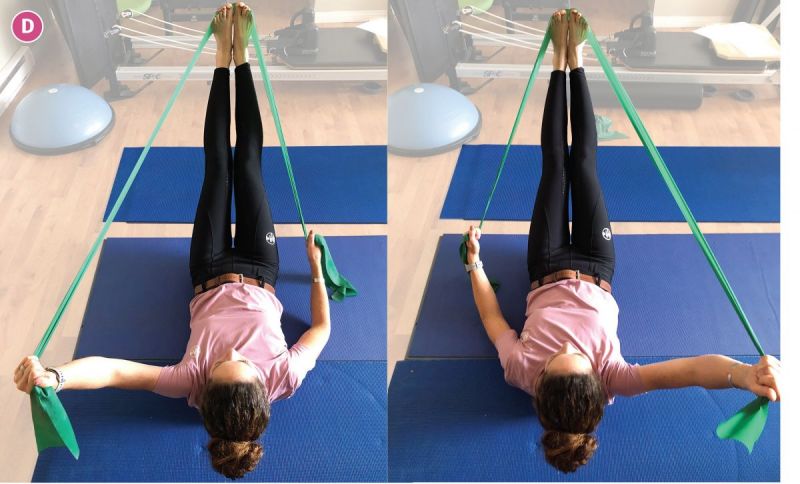
- Arms open diagonally 3 times.
- Maintain even torso both sides.
- Repeat 8 times each side.
Related: Building a Rider Fitness Program
Related: Support Your Back when Riding Horses
Exercise 4: Coordination with Hand Weights
Starting position: Lay on back, knees bent in table-top, arms extended toward ceiling.

- Exhale, curl up into ab prep.
- Inhale, extend one leg towards ceiling.
- Exhale, lower extended leg and opposite arm, inhale, pause and hold.
- Exhale, lift arm and leg.
- Do this 5 times then switch sides.
- Repeat each side 3 times.
Exercise 5: One Foot Standing Balance with Hand Weights
A. Starting position: Stand on one foot with knee slightly bent and upper body forward (close your hip angle).

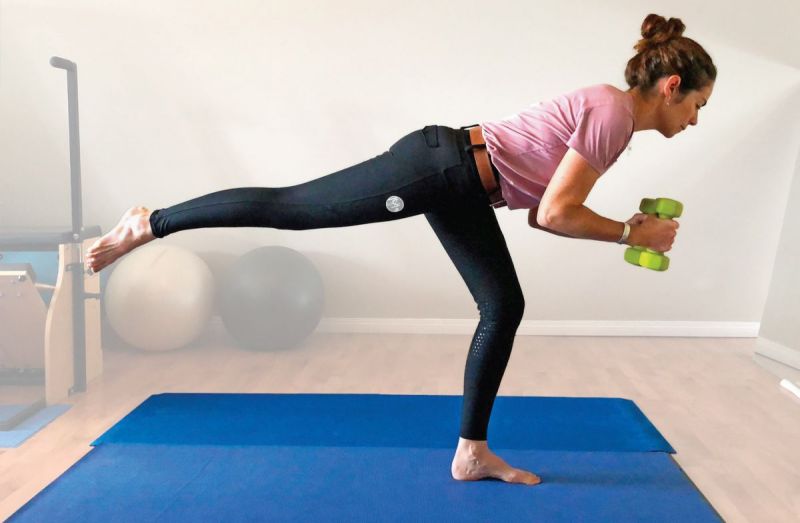
- Reach both arms forward and one leg back, hold 5 seconds and bend in without putting foot down, repeat 4 times.
- Switch sides.
Reminders:
- Keep breathing – exhale on the work of the exercise but when in doubt just breathe!
- Focus on deliberate, controlled movements of individual body parts.
- If you feel your lower back arching off the floor, adjust the exercise and put one foot down on floor, or only extend legs slightly or not at all (keep them in table-top).
- Use cushion under head if your neck feels weak or needs support.
Please note: It is important to contact your physician and or other healthcare professional before starting a new exercise program.
Related: Pilates for Every Equestrian
Related: How to Fall Off a Horse
All exercise photos courtesy of Sandra Verda-Zanatta
Main Photo: Tina Irwin riding the Oldenburg mare, Fancy That. Credit: Clix Photography



